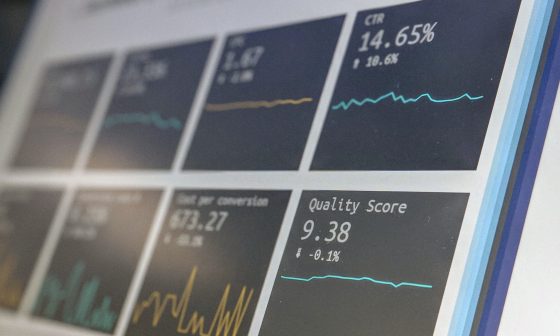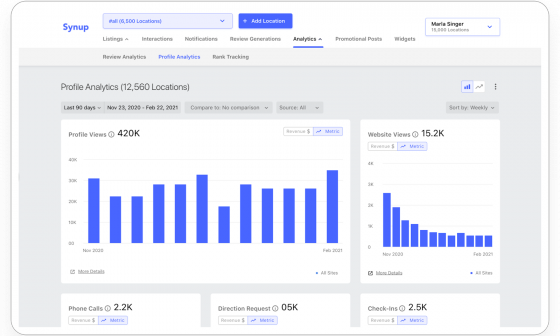Thanks to technological developments in cloud storage and big data collection, brands today have access to an immense amount of raw data. In fact, one could argue that we’re dealing with an oversaturation of data in multiple forms from several channels—and the large chunks of data that are being collected are not being utilized effectively to aid business growth.
Raw data is being collected, absorbed, and shared in tremendous quantities, but in order to be aligned for success, advanced capabilities like machine learning and artificial intelligence need to be used to draw actionable insights. But how does one define “actionable insights” and what do brands need to do to make the most out of them? Let’s dive deeper into it.
What are actionable insights?
Actionable insights are snippets of information extracted from raw data that provide us with the ability to make guided, intelligent decisions to bring about an expected outcome.
While all insights ultimately require an analysis of data to derive meaningful conclusions, how “actionable” they are for a business can be evaluated based on five factors.
- Alignment: Do they help achieve your business’ objectives and goals?
- Context: How are these insights important for your business?
- Relevance: Do these insights truly provide value to your business, or are they just noise?
- Novelty: Are the insights new or outdated?
- Clarity: How consumable and detailed are these insights?
We’re finding that companies are still working toward building tools to better manage this data, but the relationship between the data and the actionable insights is still far from realizing its full potential. Local brands need to strive towards automatically comprehending what these metrics and data points mean for the business at scale.
Building actionable insights for your local business
For any brand with a number of physical stores/locations, the most actionable insights will usually come from a few important primary metrics. For instance:
- Change in digital profile viewership and engagement
- Average number of positive reviews and star rating
- Offline sales and revenue comparisons between different business locations
- Number of brand searches and improvement in online visibility
We started from a world of data structures with local content being displayed on Yellow Pages and websites that gradually evolved into becoming accessible on smartphones, business discovery apps, and other sources of local content. Information sources also went from being just delivered as static text to being interactive—enabling customers to give feedback to businesses, write reviews, and in some cases, even edit publicly available business information.
However, with all of these interactions came the challenge of managing all this information, and worse, building relationships between the data points that derive actionable insights from it. For big brands that have hundreds of business locations (which translates to thousands of digital profiles and hundreds-of-thousands of user & brand-generated content), managing the amount of data at their disposal and deriving insights from it is nearly an impossible manual task—and needs the aid of automated processes that will be carried out at scale. An underlying smart mechanism or engine that knows how to make these kinds of connections is becoming crucially important, just as much as it is to provide broad data on your offerings, solutions, products, and sales.
Brands need to consolidate their structured and unstructured data points to zero in on factors that are driving growth to understand pain points that are slowing down progress. It’s not enough to just say, “I’ve got listings data.” It’s not enough just to aggregate, view, and automate responses to reviews. It’s not enough to just understand how many impressions your digital profiles generate and leave it at that.
Structured versus unstructured data has been a computer science problem for decades, but it’s a local marketing problem now as well. We now have some notion of the tools that might help get us there, but we need to take it to the next level. A dotted picture isn’t enough. It’s imperative to connect the dots that will ultimately create a better customer experience and journey.
Preparing for the future
Most brands and individuals view data analysis as a quantitative numbers game, but actionable insights are a purely qualitative entity focused on refining a brand’s understanding of how much ground they can hope to gain based on historical data and customer behavior. While one-time efforts to produce predictions and projections are great, leveraging the information at hand to regularly build actionable insights is imperative to stay ahead of the curve.
Ten years down the line, the CMO, CDO (Chief Digital Officer), CXO (Chief Experience Officer), as well as voice search, brand, social, & operational manager at every major enterprise will want to use objective and accurate data-driven insights to improve customer acquisition and engagement across the funnel. The revolution to depend heavily on insights to make business decisions has already started, and when push comes to shove, brands need to make sure that they are prepared for this and have a system in place to track, measure, and build insights from their data.
While waiting for D-Day to arrive isn’t a crime, marketers need to increasingly treat local marketing like other forms of digital marketing and build a strategy that goes beyond just top-of-the-funnel push marketing or improving brand awareness. Creating a framework that automatically generates insights, creates promotions based on user-generated content, predicts when a customer has the highest probability of finding your business, or augments review responses for your brand could make the difference between your brand gaining a strong foothold in the market and trailing behind your biggest competitor.


